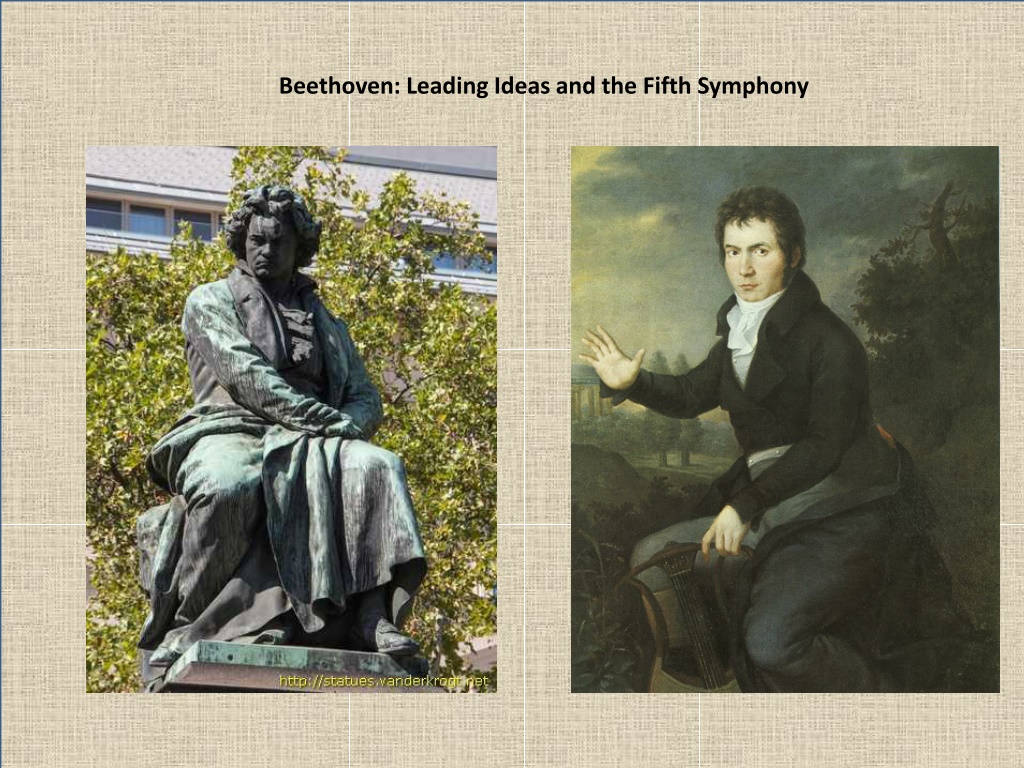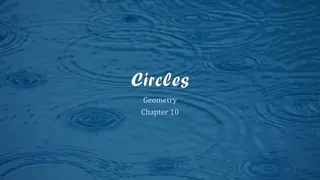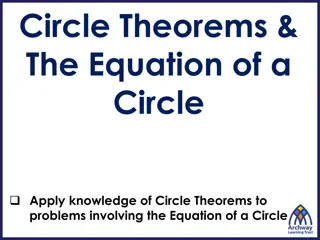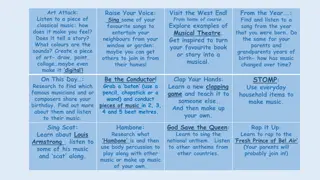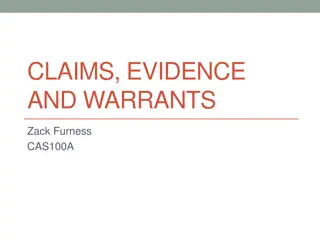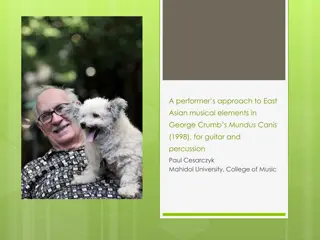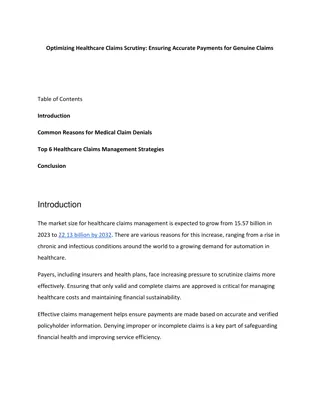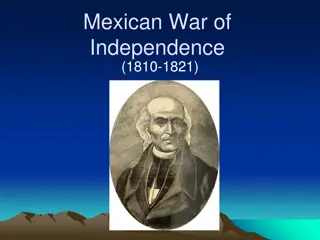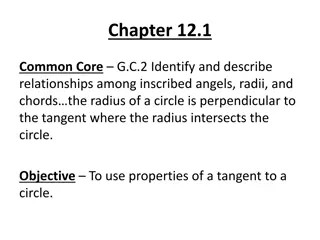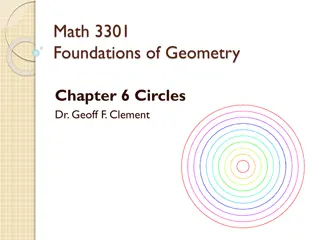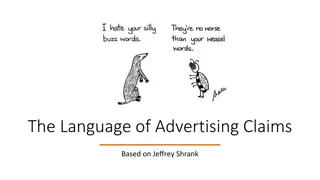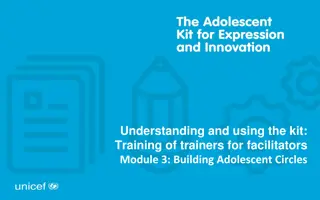Elevation of New Claims in Viennese Musical Circles, c. 1780-1810
During 1780-1810, Vienna's elite musical circles witnessed the rise of new, profound claims for instrumental music, emphasizing the language of heart, soul, and mind. This period glorified idealized emotions, thoughts, tasteful entertainment, personal confessions, and the pursuit of autonomous beauty and high craft. It symbolized social prestige, spiritual enactment, and the healing capacity of music for the soul's moral and physical well-being.
Download Presentation

Please find below an Image/Link to download the presentation.
The content on the website is provided AS IS for your information and personal use only. It may not be sold, licensed, or shared on other websites without obtaining consent from the author. Download presentation by click this link. If you encounter any issues during the download, it is possible that the publisher has removed the file from their server.
E N D
Presentation Transcript
In Certain of Viennas Elite Musical Circles, c. 1780-1810: The Elevation and Validation of New, Higher Claims for Instrumental Music
In Certain of Viennas Elite Musical Circles, c. 1780-1810: The Elevation and Validation of New, Higher Claims for Instrumental Music From: To (supplementary claims): Language of the heart/emotions Language of the soul/mind
In Certain of Viennas Elite Musical Circles, c. 1780-1810: The Elevation and Validation of New, Higher Claims for Instrumental Music From: To (supplementary claims): Language of the heart/emotions Language of the soul/mind Idealized emotion Idealized thought /spirit
In Certain of Viennas Elite Musical Circles, c. 1780-1810: The Elevation and Validation of New, Higher Claims for Instrumental Music From: To (supplementary claims): Language of the heart/emotions Language of the soul/mind Idealized emotion Idealized thought /spirit Tasteful entertainment Earnest personal confession; a devotional practice
In Certain of Viennas Elite Musical Circles, c. 1780-1810: The Elevation and Validation of New, Higher Claims for Instrumental Music From: To (supplementary claims): Language of the heart/emotions Language of the soul/mind Idealized emotion Idealized thought /spirit Tasteful entertainment Earnest personal confession; a devotional practice A mere grace of life Ideal sphere of autonomous beauty and high craft
In Certain of Viennas Elite Musical Circles, c. 1780-1810: The Elevation and Validation of New, Higher Claims for Instrumental Music From: To (supplementary claims): Language of the heart/emotions Language of the soul/mind Idealized emotion Idealized thought /spirit Tasteful entertainment Earnest personal confession; a devotional practice A mere grace of life Ideal sphere of autonomous beauty and high craft A badge of social prestige, wealth, or taste An spiritual enactment capable of stirring and healing the soul: moral and physical benefits
The Ideology of the Aesthetic, enabled by the Profundity Contract : A Feedback Loop (c. 1790ff) Composer Performer/Listener
Friedrich Schiller: art as the ultimate pursuit in the perfection of humanity
Friedrich Schiller: art as the ultimate pursuit in the perfection of humanity Wilhelm Wackenroder: music as motions of the soul (Taruskin, II, 399)
Friedrich Schiller: art as the ultimate pursuit in the perfection of humanity Wilhelm Wackenroder: music as motions of the soul (Taruskin, II, 399) E. T. A. Hoffmann: Beethoven leads us into the spirit realm . . . disclosing the infinite
Friedrich Schiller: art as the ultimate pursuit in the perfection of humanity Wilhelm Wackenroder: music as motions of the soul (Taruskin, II, 399) E. T. A. Hoffmann: Beethoven leads us into the spirit realm . . . disclosing the infinite Friedrich Wilhelm Joseph Schelling: art presents to us the forms of eternal things
But how can we validate music as thought (rather than regard it as merely tasteful entertainment)? 1. Poetic Ideas A) Political connotations (dramatized musical myths of struggle and liberation) B) Nature images or references C) Deep personal contemplation (music as depth )
But how can we validate music as thought (rather than regard it as merely tasteful entertainment)? 1. Poetic Ideas A) Political connotations (dramatized musical myths of struggle and liberation) B) Nature images or references C) Deep personal contemplation (music as depth ) 2. Music as Primal Gesture
But how can we validate music as thought (rather than regard it as merely tasteful entertainment)? 1. Poetic Ideas A) Political connotations (dramatized musical myths of struggle and liberation) B) Nature images or references C) Deep personal contemplation (music as depth ) 2. Music as Primal Gesture 3. Monumentality
But how can we validate music as thought (rather than regard it as merely tasteful entertainment)? 1. Poetic Ideas A) Political connotations (dramatized musical myths of struggle and liberation) B) Nature images or references C) Deep personal contemplation (music as depth ) 2. Music as Primal Gesture 3. Monumentality Breakthroughs beyond earlier limits of high-galant taste in such aspects as: dimensions of individual movements or parts thereof dramatic tension, suspense, mystery, shock roughness, accent, dissonance loudness and noise
But how can we validate music as thought (rather than regard it as merely tasteful entertainment)? 1. Poetic Ideas A) Political connotations (dramatized musical myths of struggle and liberation) B) Nature images or references C) Deep personal contemplation (music as depth ) 2. Music as Primal Gesture 3. Monumentality 4. Individualization of the Artwork
But how can we validate music as thought (rather than regard it as merely tasteful entertainment)? 1. Poetic Ideas A) Political connotations (dramatized musical myths of struggle and liberation) B) Nature images or references C) Deep personal contemplation (music as depth ) 2. Music as Primal Gesture 3. Monumentality 4. Individualization of the Artwork Shift from generic expression to individualized expression, in which each work is a unique utterance, not merely a well-crafted exemplar of a genre.
But how can we validate music as thought (rather than regard it as merely tasteful entertainment)? 1. Poetic Ideas A) Political connotations (dramatized musical myths of struggle and liberation) B) Nature images or references C) Deep personal contemplation (music as depth ) 2. Music as Primal Gesture 3. Monumentality 4. Individualization of the Artwork 5. Enhanced Dramatic/Motivic Coherence from Moment to Moment
Coriolan Overture, op. 62 (1807) music as process and organic growth musical logic
But how can we validate music as thought (rather than regard it as merely tasteful entertainment)? 1. Poetic Ideas A) Political connotations (dramatized musical myths of struggle and liberation) B) Nature images or references C) Deep personal contemplation (music as depth ) 2. Music as Primal Gesture 3. Monumentality 4. Individualization of the Artwork 5. Enhanced Dramatic/Motivic Coherence from Moment to Moment
But how can we validate music as thought (rather than regard it as merely tasteful entertainment)? 1. Poetic Ideas A) Political connotations (dramatized musical myths of struggle and liberation) B) Nature images or references C) Deep personal contemplation (music as depth ) 2. Music as Primal Gesture 3. Monumentality 4. Individualization of the Artwork 5. Enhanced Dramatic/Motivic Coherence from Moment to Moment 6. Dramatizing Ideas over Long Spans of Time
The Multimovement Work as a Coherent, Connected Discourse ( Novelistic ) in Four Movements ( Chapters )
The Multimovement Work as a Coherent, Connected Discourse ( Novelistic ) in Four Movements ( Chapters ) Concept: the finale symphony : 1 4 2 3
Sonata Minuet/Scherzo Finale Slow 3 2 4 1
Sonata Minuet/Scherzo Finale Slow 3 2 4 1 Tonic Off-tonic? Tonic Tonic (IV, V, i. . .) Major:
Sonata Minuet/Scherzo Finale Slow 3 2 4 1 Tonic Off-tonic? Tonic Tonic (IV, V, i. . .) Major: Minor: Tonic Off-tonic? Tonic minor Tonic (III, I, VI. . .) major or minor
Sonata Minuet/Scherzo Finale Slow 3 2 4 1 Tonic Off-tonic? Tonic Tonic (IV, V, i. . .) Major: Minor: Tonic Off-tonic? Tonic minor Tonic (III, I, VI. . .) major or minor
Sonata Minuet/Scherzo Finale Slow 3 2 4 1 Tonic Off-tonic? Tonic Tonic (IV, V, i) Major: Minor: Tonic Off-tonic? Tonic minor Tonic (III, I, VI) major or minor Beethoven s Symphony No. 5, op. 67 C minor Ab major C minor C major!
Sonata Minuet/Scherzo Finale Slow 3 2 4 1 Tonic Off-tonic? Tonic Tonic (IV, V, i) Major: Minor: Tonic Off-tonic? Tonic Tonic (III, I, VI) major or minor Beethoven s Symphony No. 5, op. 67 C minor Ab major C minor C major!
Beethoven, Symphony No. 5 in C Minor, op. 67, first movement Aspects of the plot C-Minor Mood (as often in Beethoven) struggling with fearful anxiety, grim fate, or external threat.
Beethoven, Symphony No. 5 in C Minor, op. 67, first movement Aspects of the plot C-Minor Mood (as often in Beethoven) struggling with fearful anxiety, grim fate, or external threat. The threat: persistently signified in two ways: the minor mode (initially, C minor) and the fate rhythm (short-short-short-long)
Beethoven, Symphony No. 5 in C Minor, op. 67, first movement Aspects of the plot C-Minor Mood (as often in Beethoven) struggling with fearful anxiety, grim fate, or external threat. The threat: persistently signified in two ways: the minor mode (initially, C minor) and the fate rhythm (short-short-short-long) Obsessive multiplication of the fate rhythm; music as ongoing generative growth; bar-to-bar coherence and musical logic ; form as process ; organicism
Beethoven, Symphony No. 5 in C Minor, op. 67, first movement Aspects of the plot C-Minor Mood (as often in Beethoven) struggling with fearful anxiety, grim fate, or external threat. The threat: persistently signified in two ways: the minor mode (initially, C minor) and the fate rhythm (short-short-short-long) Obsessive multiplication of the fate rhythm; music as ongoing generative growth; bar-to-bar coherence and musical logic ; form as process ; organicism Seeking relief or emancipation from C minor: Ultimately seeking C major. BUT HOW?
Beethoven, Symphony No. 5 in C Minor, op. 67, first movement Aspects of the plot C-Minor Mood (as often in Beethoven) struggling with fearful anxiety, grim fate, or external threat. The threat: persistently signified in two ways: the minor mode (initially, C minor) and the fate rhythm (short-short-short-long) Obsessive multiplication of the fate rhythm; music as ongoing generative growth; bar-to-bar coherence and musical logic ; form as process ; organicism Seeking relief or emancipation from C minor: Ultimately seeking C major. BUT HOW? The initial hope (first movement): via the built-in processes offered by minor-mode sonata form, a dramatic-structural format that is capable, over its course, of transforming minor into major.
C-minor sonata form with secondary theme in major III Exposition Development Recapitulation S . . . . S P P Eb C (+ or - ?) c- c- Sonata-Space
C-minor sonata form with secondary theme in major III Exposition Development Recapitulation S . . . . S P P Eb C (+ or - ?) c- c- Sonata-Space
C-minor sonata form with secondary theme in major III Exposition Development Recapitulation S . . . . S P P Eb c- C+? c- One wins! Sonata-Space
C-minor sonata form with secondary theme in major III Exposition Development Recapitulation S . . . . S P P Eb c- C-? c- One loses! Sonata-Space
Beethoven, Symphony No. 5 in C Minor, op. 67, first movement Exposition Development Recapitulation Coda S . . . . S P P Eb C+? c- C+? c- Sonata-Space
Two-Part Exposition: Minor Mode with Second Part in Major III III: PAC (EEC) Essential Expositional Closure MC , (medial caesura) S C . . . . P TR Eb! Eb! c-, mod to V of Eb (energy-gain) c- The Four Standard Action-Zones of a Two-Part Sonata Exposition
Beethoven, Symphony No. 5 in C Minor, op. 67, first movement III: PAC (EEC) Essential Expositional Closure MC , (medial caesura) S C . . . . P TR Eb! Eb! c-, mod to V of Eb (energy-gain) c-
P TR S
Beethoven, Symphony No. 5 in C Minor, op. 67, first movement III: PAC (EEC) Essential Expositional Closure MC , (medial caesura) S C . . . . P TR Eb! Eb! c-, mod to V of Eb (energy-gain) c-
P TR S
Beethoven, Symphony No. 5 in C Minor, op. 67, first movement III: PAC (EEC) Essential Expositional Closure MC , (medial caesura) S C . . . . P TR Eb! Eb! c-, mod to V of Eb (energy-gain) c-
P TR S
Beethoven, Symphony No. 5 in C Minor, op. 67, first movement III: PAC (EEC) Essential Expositional Closure MC , (medial caesura) S C . . . . P TR Eb! Eb! Victory predicted! c-, mod to V of Eb (energy-gain) c-
Beethoven, Symphony No. 5 in C Minor, op. 67, first movement III: PAC (EEC) Essential Expositional Closure MC , (medial caesura) S C . . . . P TR Eb! Eb! c-, mod to V of Eb (energy-gain) c-
